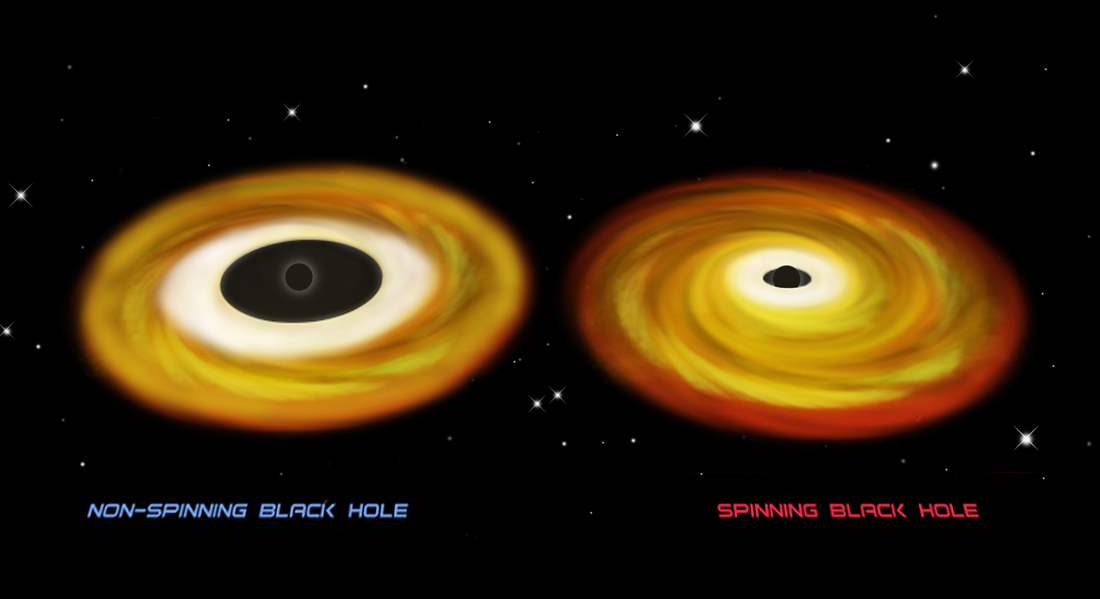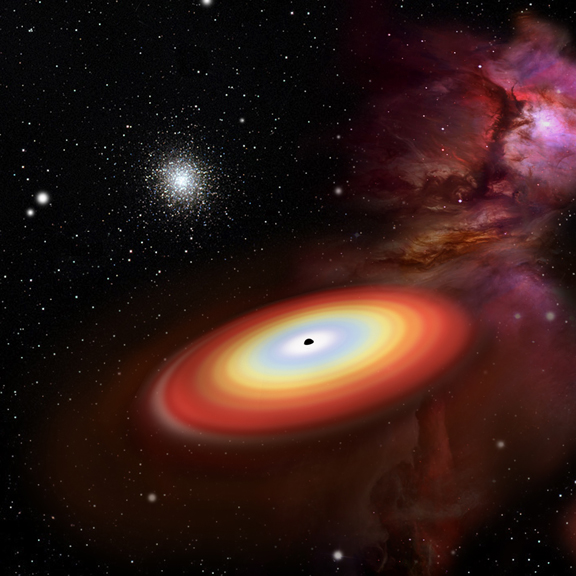Image List
-

This illustration shows a swirling disk of accreting gas orbiting a black hole, with the bulk of the X-rays pouring out of the inner, white-shaded region of the disk. One remarkable prediction of Einstein's relativity theory is the existence of a smallest radius for the disk, inside of which the gas suddenly plunges into the hole with no time to radiate away its energy.For the non-spinning black hole shown at left, this inner radius is large, which leaves a big dark hole cut out of the center of the hot disk of gas. For the fast-spinning black hole shown at right, the gas can orbit very near the event horizon, and thus only a small portion of the inner disk is missing. Therefore, the radius of the hole is a direct measure of the spin.
NASA/CXC/M.Weiss -

This illustration shows a swirling disk of accreting gas orbiting a fast-spinning black hole, with the bulk of the X-rays pouring out of the inner, white-shaded region of the disk. One remarkable prediction of Einstein's relativity theory is the existence of a smallest radius for the disk, inside of which the gas suddenly plunges into the hole with no time to radiate away its energy. The distance from this innermost stable orbit to the black hole center depends on spin. The greater the spin, the closer the matter can orbit "safely." Because the inner edge of the disk is so close in the case of the fast-spinning black hole, the gas there is extraordinarily hot and bright. The radius of the hole -- which is a direct measure of the spin -- is determined by fitting the continuous X-ray spectrum recorded by an X-ray spectrometer (which is completely analogous to the spectrum of sunlight dispersed by a prism) to a model of the hot disk that includes all the effects of relativity.
David A. Aguilar (CfA)